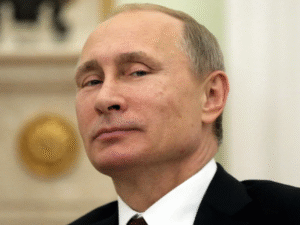$DXY $BTC $SPY
#GlobalEconomy #USMarkets #DonaldTrump #EmergingMarkets #StockMarkets #CryptoNews #MarketTrends #Investing #Macroeconomics #FinancialAnalysis #2025Forecast #MarketShifts
Projections for the upcoming years often start with assumptions that hinge on the influence of major political figures, particularly Donald Trump in this case. However, according to Ruchir Sharma, these predictions may miss a broader picture by overstating the role of U.S. politics and markets in steering the trajectory of the global economy. While Trump’s impact on trade policies and financial regulations has been substantial in the past, Sharma suggests a gradual but noticeable shift away from the U.S.-centric framework dominating economic discourse. Instead, other regions may assert greater influence, with emerging markets poised to reshape the narrative of global growth as they adapt to shocks more rapidly than developed economies. This trend can redefine investments, forcing global investors to recalibrate their portfolios.
A potential weakening of the U.S. dollar ($DXY) could play a central role in this pivot, as the world economy diversifies its reliance on American markets. Historically, the U.S. dollar has been a safe-haven currency, providing insulation during turbulence. However, with central banks expanding their gold reserves and some countries shifting toward neutral currency agreements for trade, the greenback could see diminished dominance. Such a development could fuel interest in cryptocurrencies like $BTC, as both institutions and retail investors increasingly explore alternatives to fiat currencies. Meanwhile, U.S. stocks, tracked by indices such as the $SPY, may cede some of their global influence to equities from emerging markets as capital flows redirect toward regions offering higher growth potential.
Sharma’s analysis also implies a reimagining of supply chains, which could influence corporate earnings and equity prices globally. The decoupling between the U.S. and China, initiated during Trump’s tenure, has already begun to reroute trade flows, benefitting several Southeast Asian economies along the way. Manufacturing hubs like Vietnam and India might continue gaining traction as companies diversify outside of China to mitigate geopolitical risks. This implies significant momentum in sectors like technology, consumer goods, and infrastructure within these markets. From an investment perspective, emerging-market ETFs or direct exposure to these countries’ equities could outperform traditional U.S. large-cap holdings.
For investors, the evolving dynamics of global economic leadership present risks and opportunities in equal measure. A less U.S.-centric market landscape could lead to greater volatility as investors navigate unfamiliar terrain, but it equally opens up new avenues of growth. Cryptocurrencies and diversified international equities, for instance, might increasingly form part of a forward-looking portfolio strategy. While U.S. politics will remain a factor, Sharma’s outlook suggests that avoiding a singular focus on such narratives is essential for success in an increasingly multipolar global economy.







Comments are closed.